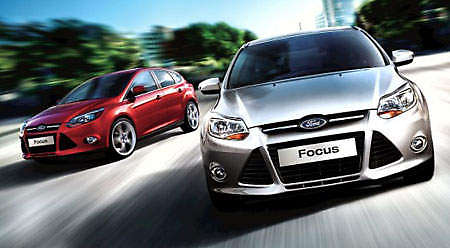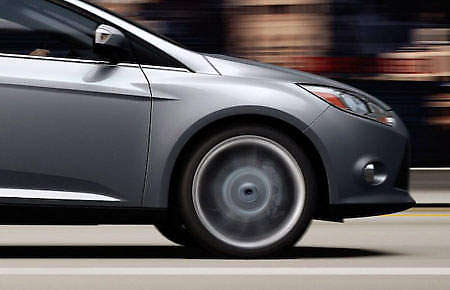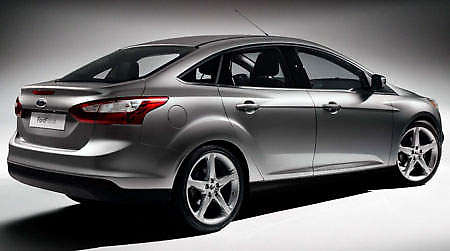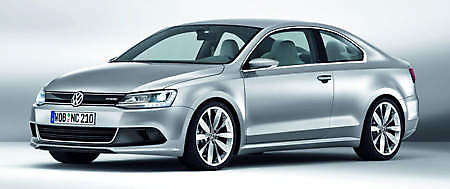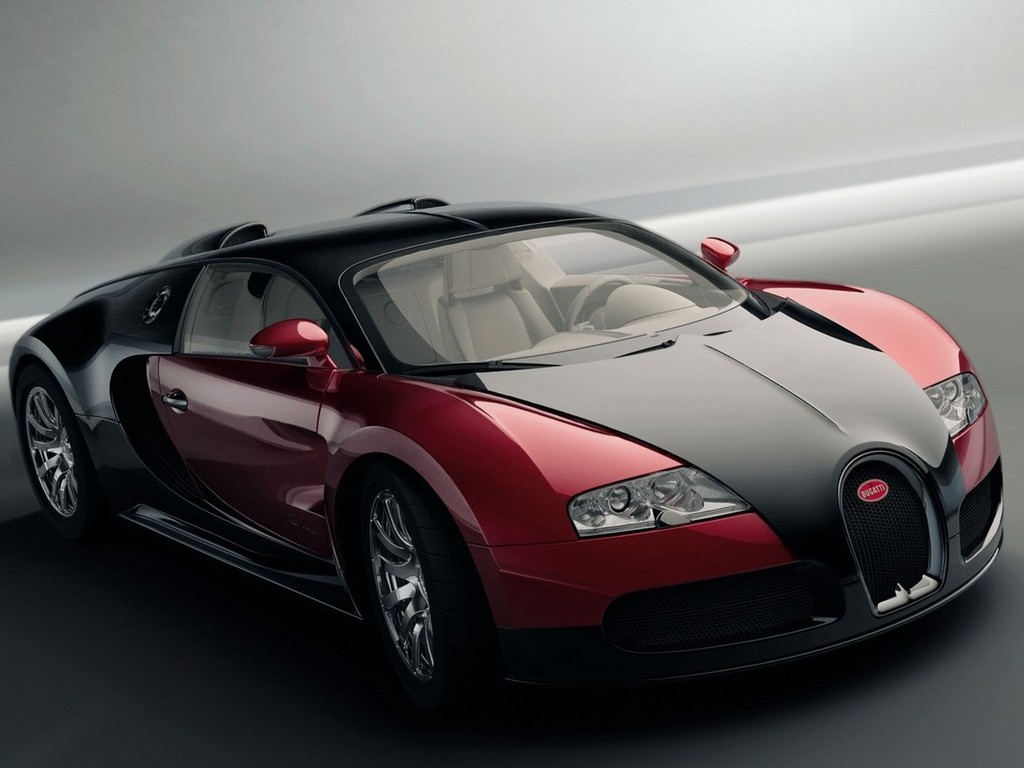5/06/2010
5/05/2010
The 3rd generation Ford Focus - basically an electric power steering
The Ford Focus has always been one of the best-handling C-segment cars I’ve ever driven. The biggest drawback it has for the Malaysian market is that it’s a little small on the inside, being an European product where their C-segment cars are a little smaller. Their Civic is a smaller hatch compared to the large 2,700mm wheelbase version we get here.
And here it is, the latest edition of the Focus. Ford pegs it as all-new, and technically it should be considering that the 2nd generation Focus has already been facelifted. So this is basically the third generation and for the first time the Focus is a world car instead of being two different products for North America and the rest of the world. I had a go at the North American product earlier this week and I can understand why American journos have been calling for Ford to bring the Euro Focus across the ocean. Well, they don’t have to do that anymore – they are going to get this new global Focus as well.
The design is far edgier compared to the outgoing Focus. Ford attempted to add some Kinetic Design elements to the current Focus when it got facelifted but because there’s just so much you can change during a facelift, the end result was not as ‘kinetic’ as say, the new Fiesta or the new Ford Kuga. With this new body, Ford has pulled out all the stops with their Kinetic Design – check out details like the ‘zorro Z’ design at the front wheel arch. The ducktail on the sedan’s boot is also pretty prominent. Some might feel it’s perhaps a little too overdone, especially the details of the front bumper. They look like they belong on an aggressive model like an ST or an RS, but these are just your regular Focus models. But this could also be a good thing for some customers – no mods needed.
Wheelbase has unchanged, though the new Focus is a little longer mostly due to pedestrian safety requirements. This means the overhangs are longer. What this will mean is that the interior space is probably largely unchanged over the 2nd generation. Ford says based on their market research this is a good balance between size and fuel economy but to me, for a world car there definitely will be markets where a larger vehicle will be called for. After all, that is why Honda split the CIvic in two. In these markets, certain buyers will look to other vehicles no matter how good the Focus looks simply because of interior space. The new 3rd generation Focus also differentiates between the sedan and the hatchback variant more than the 2nd generation did. The vertical tail lamps are gone on the hatchback in favor of wider rear glass but the tail lamps remain mounted high-ish.
Changes to the platform between the 2nd generation and the 3rd generation mostly covers the way the suspension subframes are mounted. There has been some changes which are primarily driven by the desire to increase the level of NVH damping of the Focus. Thus you can expect the new Ford Focus to feel a little more refined than the outgoing one. Techniques such as the use of sashed doors, dual plane sealing, more aerodynamic wing mirrors and windshield wipers are used. Ford says the new Focus Global C platform shares only about one third with the new Mazda 3, while the rest are exclusively Ford.
Ford wanted the new Focus to be more refined and more quiet, as quiet is one of the factors that we take into account when our brains process the feel of ‘quality’. Quietness is also a big thing for what Ford defines as the new Ford flavor these days – they are investing alot into ways they can make their cars more silent, as I will show you in an upcoming post.
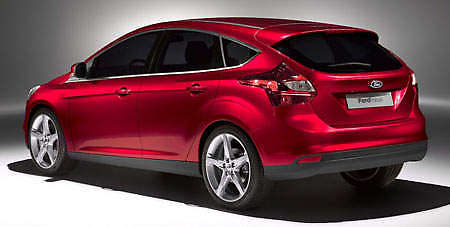
The Detroit showcar features a new 2.0 liter DI Ti-VCT engine. Those acronyms basically mean the engine has direct injection and dual variable valve timing, both on intake and exhaust. This new engine makes up to 20 horses more power than the current Mazda-based Duratec 20, while consuming 10% less fuel. The 4-speed auto has also been replaced by a new 6-speed Powershift dual clutch transmission. Apparently there is also an active grille shutter system, which shuts off some of the air intakes to improve aerodynamics whenever the extra cooling is not needed.
The new Focus will also debut an EPAS system for the first time. EPAS is basically an electric power steering. Alot of other manufacturers have started using EPAS systems in their cars but most people say an electric power steering is more ‘dead’ and unnatural compared to a regular hydraulic one. But Ford believes that a properly tuned EPAS can actually improve steering precision and feel over a hydraulic one.
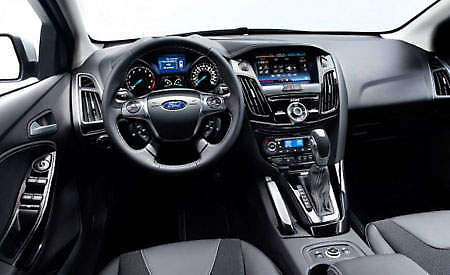
According to Ford, there are over 250 parameters and settings in an EPAS that has to be finetuned in detail to achieve a good feel. As the 2nd gen Focus was a great drive, I hope Ford got all the variables right! There’s also a Dynamic Cornering Control system which counteracts slip on the inner wheel during a corner to improve cornering performance and turn-in.
Also new is the MyFord system, which is basically like iDrive. You use a phone-style 5-way button on your steering wheel to control the user interface. MyFord is built on Microsoft Windows Auto. Quite a few companies are basing their new in-car systems on Windows Auto, such as Fiat’s Blue&Me and the new system from Kia. There’s also voice commands, so you can say Call Muthu for the phone to call up Muthu in your phonebook. MyFord is the sibling to the touch operation-based MyFord Touch and MyLincoln Touch showcased at the CES end of last year.
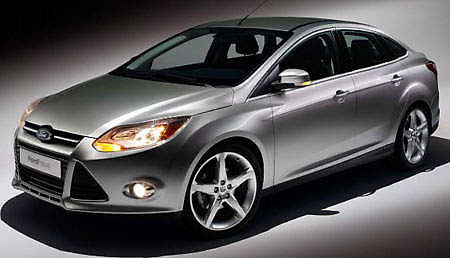
This is one of 10 cars that will spawn from this new “Global C platform”, as Ford calls it. The first was the new C-MAX and Grand C-MAX MPVs which we saw at Frankfurt last year. Ford plans to put the this new third generation global Ford Focus into production for Europe and North America late this year, with a showroom debut in early 2011. It will be quite some time before it hits Malaysia (only early 2012 optimistically), but let me let you in on a secret – we’ll see an interesting new variant of the 2nd gen Focus here soon. This additional variant to the current generation Focus will feature diesel power!
Luxury Volkswagen New Compact Coupe
This is the Volkswagen New Compact Coupe (NCC), Wolfsburg’s Detroit show star. Looking a lot like a “poor man’s Audi A5″ the NCC is powered by a hybrid powertrain which combines a 1.4-litre TSI engine with 148 bhp and 220 Nm and a 27 bhp electric motor VW calls E-motor. Naturally, power goes to the front wheels via a 7-speed DSG gearbox.
VW quotes great consumption and emission figures – 23.8 km/l economy and 98 g/km of CO2 to be precise. As a comparison, the Eos Bluemotion is rated at 16.1 km/l and 144 g/km. Performance is not sacrificed to achieve this; 227 km/h top speed and 0-100 km/h in 8.6 seconds are resepectable.
A 1.1 kWh lithium-ion battery pack stored in the NCC’s rear powers the E-motor. Efficiency measures include regenerative braking, stop-start and a “coast down” measure, where engine is disengaged from transmission as soon as the driver releases the gas pedal. This is even possible at higher speeds, as in highway cruising. Drag losses are eliminated, so the NCC coasts for a long time to save fuel.
At 4.54m long and 1.78m wide, the NCC has a similar footprint to the Jetta, although it has a lower roofline and longer wheelbase (2.65m) than the sedan. Boot volume is 380 litres. The four-seat coupe is positioned between the Scirocco and Passat CC. You can probably image that the new Mk6-based Jetta will be a four door version of this one.
Everything looks highly ready for production, from the simple, cleanly designed body to the cabin that uses parts found in current VW models. Chief Designer Klaus Bischoff describes the NCC as having a “timeless dynamic and purist elegance that is typical of Volkswagen”. When will it be launched? “When the time is right,” is the statement in the press release.




